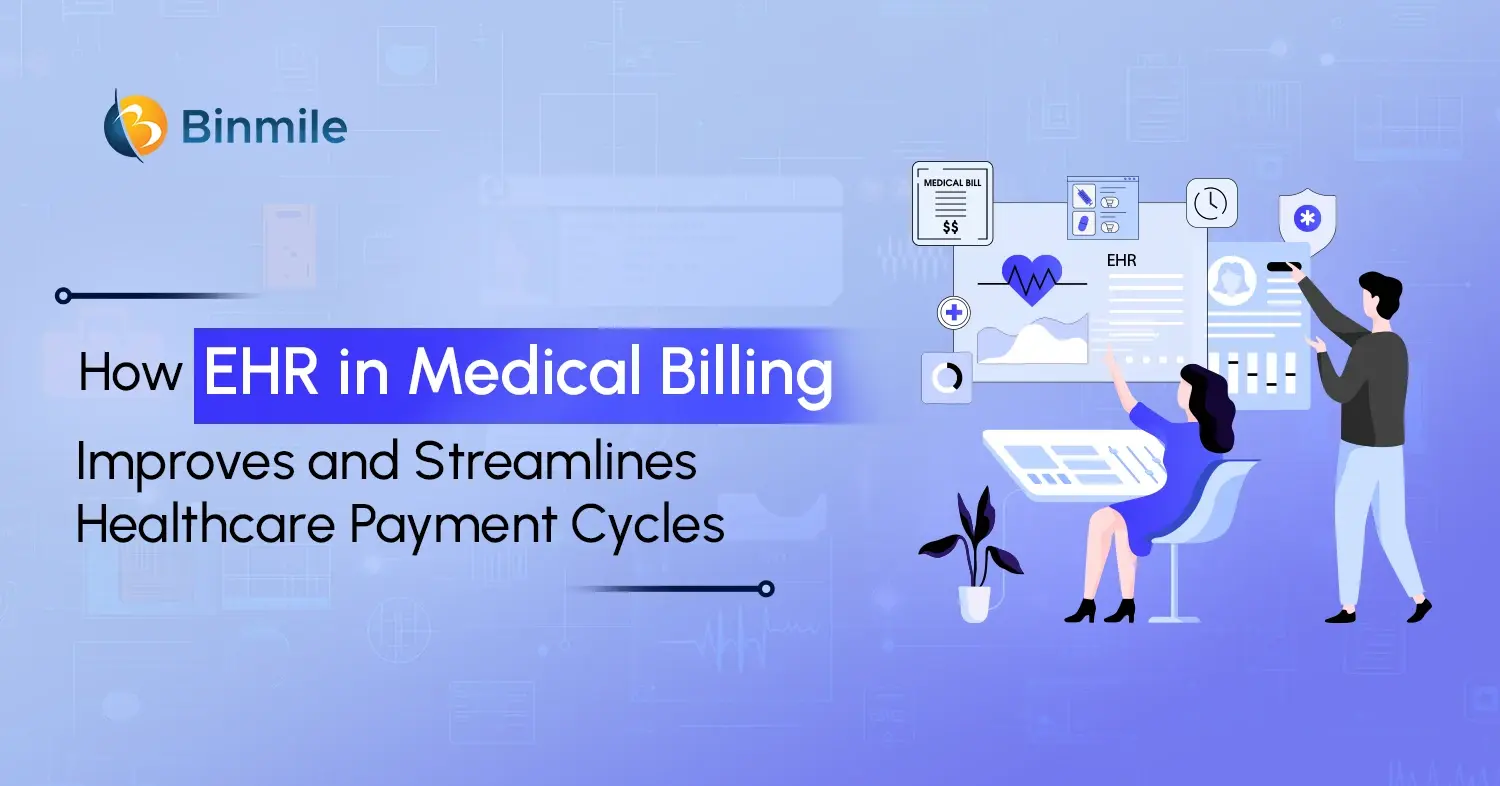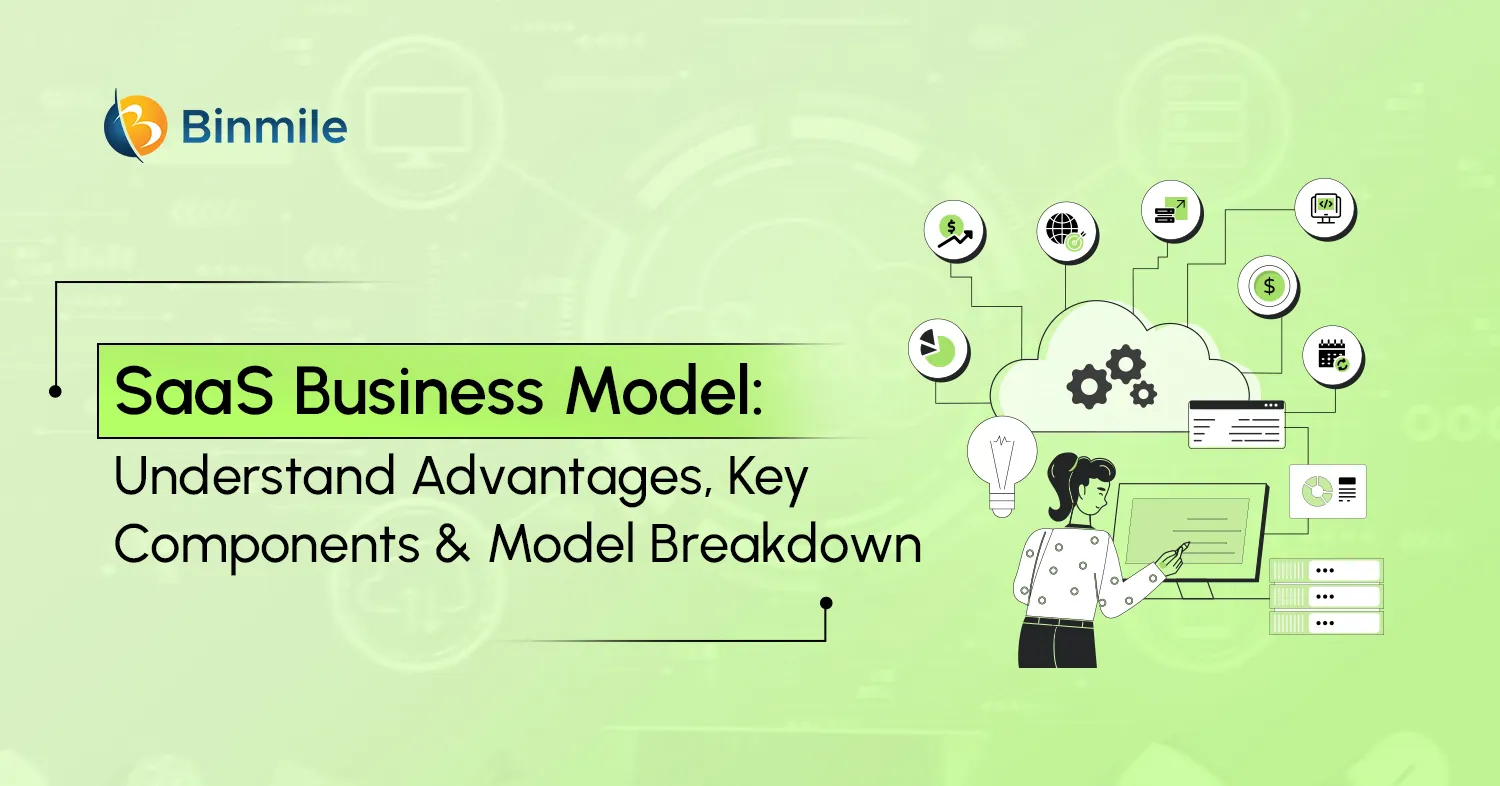Software developers leverage a lot of software methodologies and approaches to plan, build, and test new software applications. They not only simplify tasks, improve collaboration, and achieve timely but also deliver budget-friendly outcomes. However, to implement the right approach or software development models, one has to know them in detail. From the waterfall, agile, and scrum to the dynamic systems model, you might have come across these methodologies. Two of the prevalent software development methodologies are adaptive and predictive approaches.
There’s no doubt that every organization is different from one another and so are their business strategies for delivering software development services. To ensure your development approach matches your organization and project, one must understand which way to go as many project managers are moving away from conventional predictive Software Development Life Cycle (SDLC) methodologies toward adaptive SDLC methodologies. But should you? What is the difference between predictive and adaptive development? To know the difference, you must know what they are or how they work. Doing so will help you identify the best methodology for your organization and your project. Let’s help you understand what sets them apart to help you make informed decisions.
Comprehensive Guide to Understanding Predictive vs Adaptive Development Differences
Choosing the right development approach can make or break your project. This blog dives into two prominent methodologies: Predictive and Adaptive development, equipping you to make an informed decision.
What is Predictive Development: Introduction, Benefits, & Key Features
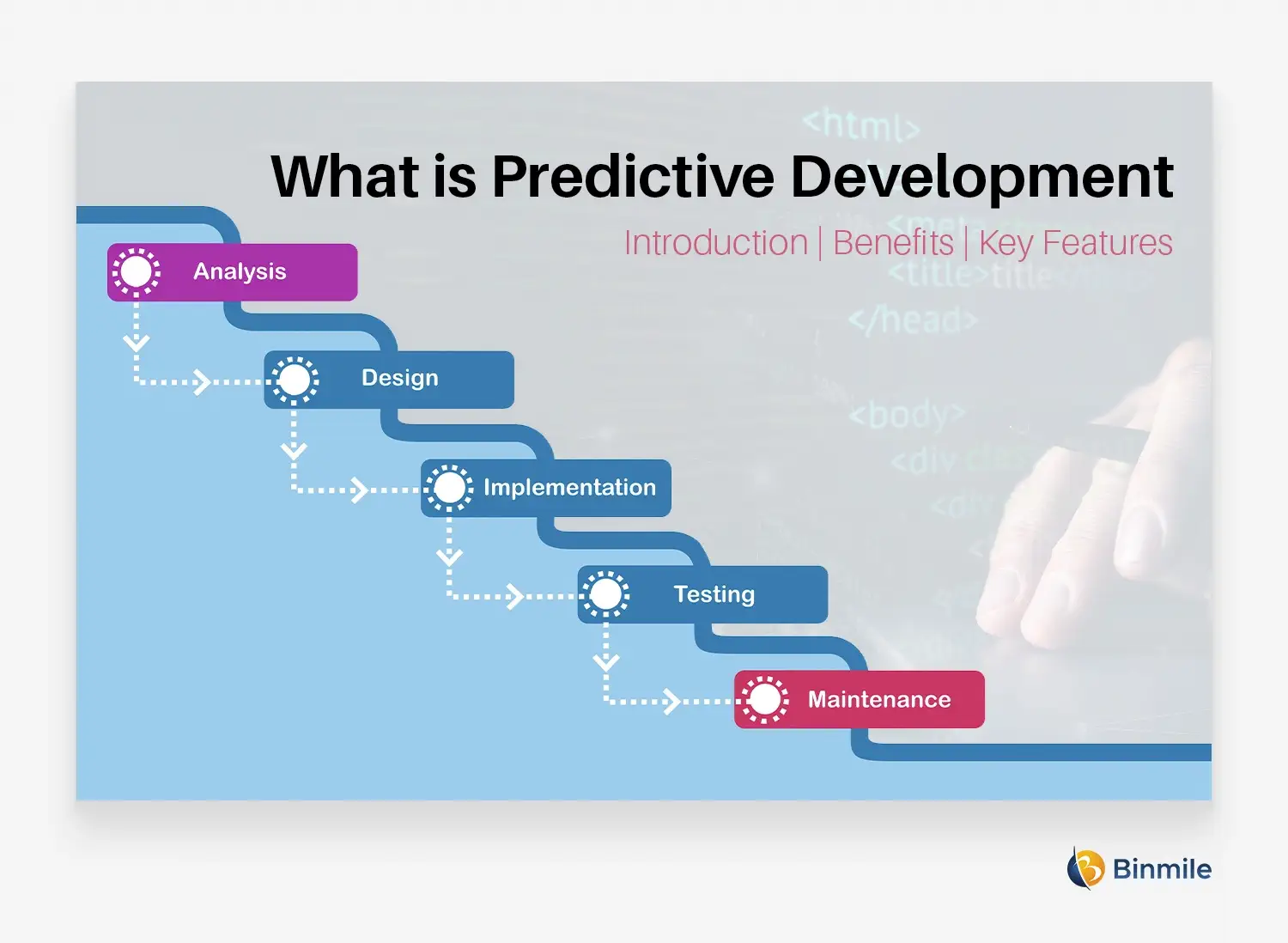
Predictive methodology follows a step-by-step process of managing and developing a program and consists of models such as Waterfall, and Iterative methods. For instance, a project is tested on each stage such as designing, implementing, and testing. It allows developers to access different completed components of the project even before the final product is delivered, which helps avoid long development delays.
Key Benefits:
- Clear Vision: A roadmap ensures everyone understands the project’s direction and goals.
- Enhanced Control: Defined processes minimize risks and ensure adherence to timeframes.
- Efficient Resource Allocation: Predefined tasks simplify resource allocation and project management.
- Thorough Testing: Dedicated testing phases guarantee quality control.
- Suitable for Compliance: Meets stringent regulatory requirements in specific domains.
Top Features:
- Sequential Workflow: Tasks progress in a linear order, one phase following another.
- Upfront Planning: Extensive planning and requirement gathering occur before development begins.
- Change Management: Changes require revisiting previous phases, potentially impacting timelines.
- Detailed Documentation: Heavy emphasis is placed on comprehensive documentation.
What is Adaptive Development: Introduction, Benefits, & Key Features
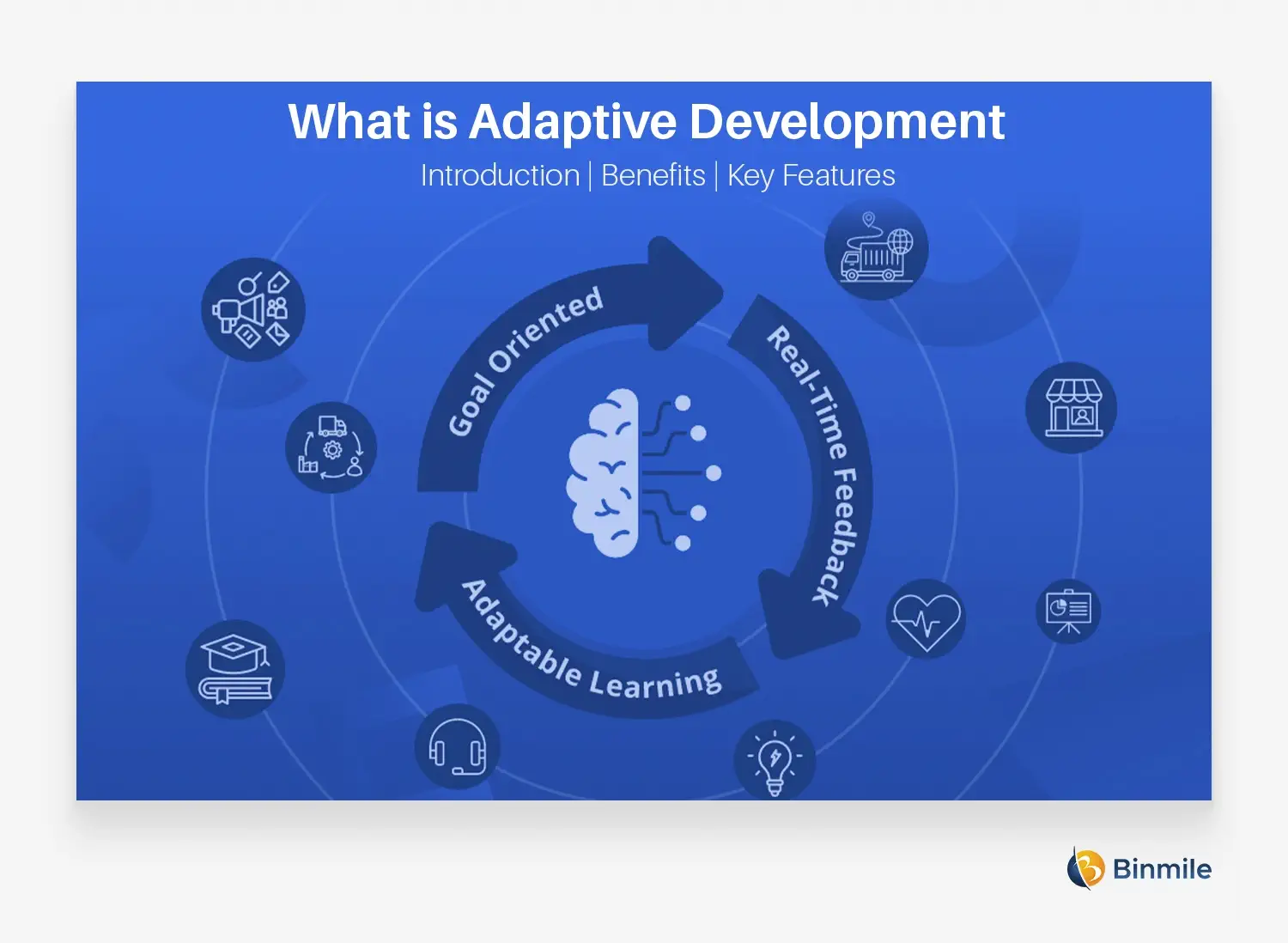
This methodology is designed to work with complex and less certain projects and follows a change-driven approach to develop, manage, and implement the project data. It offers great flexibility to all the stakeholders of the project. SCRUM or Kanban are good examples of Adaptive methodologies.
Key Benefits:
- Faster Time-to-Market: Early and continuous delivery of functional components.
- Accommodates Change: Easily adapts to evolving requirements throughout the project lifecycle.
- Enhanced Customer Involvement: Regular feedback loops ensure alignment with customer needs.
- Reduced Risk: Early identification and mitigation of potential issues.
- Strong Team Collaboration: Encourages open communication and knowledge sharing within the team.
Top Features:
- Iterative Development: The project is broken down into smaller, deliverable pieces.
- Continuous Feedback: Regular feedback loops between developers and stakeholders.
- Flexible Planning: Adapts to changing priorities and requirements.
- Focus on Working Software: Prioritizes delivering functional features over extensive documentation.
Choosing the Right Path; Predictive vs. Adaptive: What to Choose?
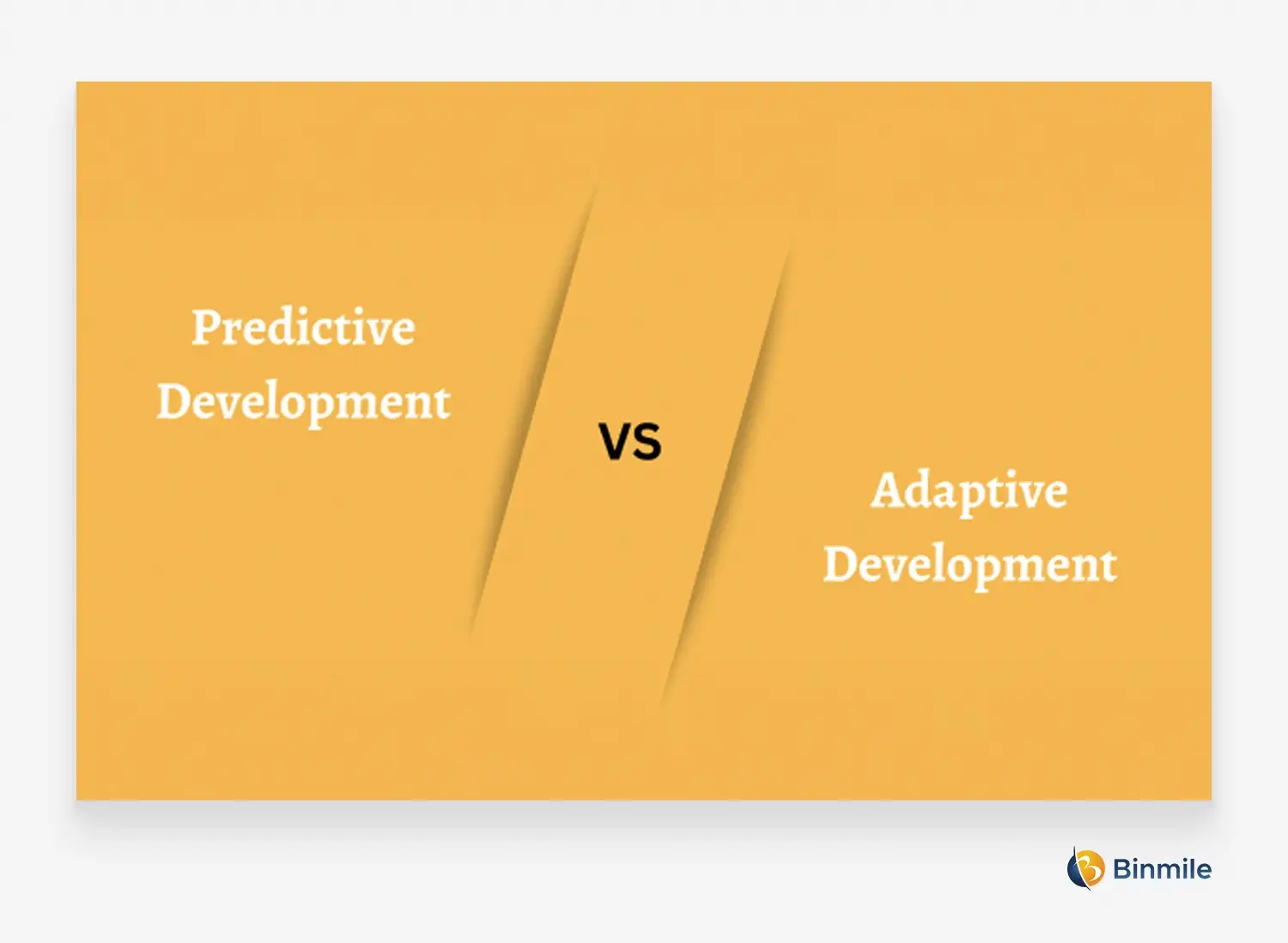
For a more informed decision, we’re listing the pros and cons of both predictive development and adaptive development.
When to Choose Predictive Development:
- The project vision and features are well-understood and unlikely to change significantly.
- Fixed deadlines and a set budget necessitate a structured approach.
- Projects subject to stringent regulations benefit from a documented development process.
- Smaller teams can efficiently manage the well-defined phases of predictive development.
When to Choose Adaptive Development:
- The project scope or features are uncertain and likely to change during development.
- Fast-paced Environment: The need to adapt to market demands or technological advancements is crucial.
- Early user feedback and continuous improvement are essential for the project’s success.
- Agile methodologies facilitate effective collaboration in complex team structures.
Which is Better? Predictive Development vs Adaptive Development: Make the Ultimate Choice!
There’s no clear winner between predictive development and adaptive development. The major reason for which approach to use lies in the type of projects you’re looking to deliver, your strategies, and your organizational needs. We recommend you to carefully analyze both methodologies and after weighing the pros and cons for each project rather than relying on a uniform approach for all projects. Here’s a breakdown of 7 key differences to guide your decision:
- Requirement Clarity: When using predictive development, there’s a demand for well-defined requirements upfront, whereas adaptive development allows for requirements to evolve throughout the project.
- Workflow: In predictive development, there’s a sequential, linear workflow, progressing through distinct phases like design, development, testing, and deployment. In contrast, adaptive development embraces an iterative, cyclical workflow, with frequent delivery of features and continuous feedback loops.
- Planning: Predictive development involves extensive upfront planning, outlining the entire project roadmap. Conversely, adaptive development adopts a flexible and ongoing planning approach, adapting to changing priorities as needed.
- Change Management: Introducing changes in predictive development is difficult as it often requires revisiting previous phases, potentially impacting timelines. Adaptive development, however, allows for easier integration of changes due to its iterative nature.
- Documentation: Predictive development places a heavy emphasis on comprehensive documentation, detailing requirements, designs, and test plans. Adaptive development focuses less on formal documentation, prioritizing working software and continuous improvement based on feedback.
- Customer Involvement: If predictive development has limited customer involvement until later stages like testing or deployment, then it’s not the case with adaptive development. As it fosters continuous customer involvement through regular feedback loops, ensuring alignment with their evolving needs.
- Risk Management: While, predictive development focuses on proactive risk identification during the initial planning phase, which is different from adaptive development. It practices continuous risk assessment throughout the project lifecycle, identifying and mitigating issues as they arise.
Wrapping Up
There’s no doubt both predictive development and adaptive development have their features, positives and negatives. There’s no clear winner when it comes to the debate of predictive vs adaptive. Moreover, many top software development companies adopt a hybrid strategy in today’s dynamic business environment. Doing so, lets them use each method’s strengths and minimize its limitations. In this blog, we discussed both methodologies, their features, and their benefits. Hopefully, this insight into the criteria and considerations for choosing either adaptive or predictive development can help you decide which development methodology aligns best with your software project goals. Software development processes can be chaotic and tedious but if you seek software development services consulting, things will be easier and more effective. Their expertise would help you accelerate your software development delivery.
Frequently Asked Questions
Projects with high uncertainty, rapidly changing requirements, or customer-driven modifications benefit from the adaptive approach. Examples include software development, digital product innovation, and R&D projects.
The adaptive approach supports continuous improvement by encouraging iteration and feedback at every stage of development. This enables teams to refine features, resolve issues early, and adjust strategies to improve outcomes.
- lexibility: The adaptive approach is flexible, accommodating changes, while the predictive approach follows a set path with limited deviation.
- Planning: Predictive relies on comprehensive upfront planning, while adaptive allows ongoing adjustments.
- Risk Management: Adaptive approaches manage risks through frequent feedback, while predictive relies on initial risk assessment.
- Project Type: Predictive is best for stable projects; adaptive is ideal for dynamic, evolving projects.



